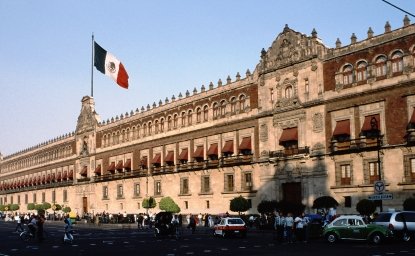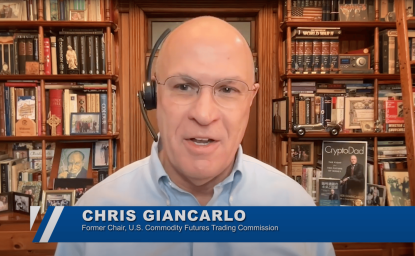It is far too early to offer concrete or foregone conclusions about the upcoming Mexican presidential race. The most important variable to keep in mind, based on the three previous presidential races since 2000, is that elections matter and they do alter the outcome. That was especially the case in 2000, when Vicente Fox defeated the Institutional Revolutionary Party (PRI) candidate, Francisco Labastida, who began with a 10 percent lead in that race. Even more surprising, Felipe Calderón, a dark-horse pre-candidate, won the nomination in a highly competitive National Action Party primary, and then went on to defeat the strongly favored PRD candidate, Andrés Manuel López Obrador, in 2006. While the presidential campaign in 2012 did not alter the outcome of the highly favored PRI candidate in the pre-election polls, Peña Nieto’s popularity among voters declined from as much as 50 percent or more before the election began, to winning with only 39 percent of the vote three months later. My speculations at this point are informed by prior published research on the presidential races in 2000, 2006, and 2012.[1] There are certain patterns among Mexican voters which are likely to prevail regardless of the candidates or the role outside influences may or may not exercise in 2018.
Presently, much of the attention in the media and among “talking heads” has focused on the potential for nationalism to impact the campaign. One such argument is President Trump’s long-term impact on Mexican attitudes before and potentially during this election. Not surprisingly, given his outspoken and negative references to Mexicans, Mexico, and U.S./Mexican economic agreements, surveys reveal that he is held in extremely low regard by the Mexican public. Consequently, there exists an expected relationship between those negative attitudes toward his administration, and their impact on the candidacies of various presidential candidates.
Observers familiar with the Mexican political scene offer the reasonable assumption that Andrés Manuel López Obrador will benefit most from the potentially increased importance of nationalistic influences on the presidential campaign. López Obrador, the two-time candidate of the left of center Party of the Democratic Revolution (PRD) in 2006 and 2012, lost the 2006 election by less than one percent of the vote and lost the 2012 election by only six percent. The one definite presidential candidate today is López Obrador (popular known as AMLO), who abandoned the PRD after 2012, forming his own personalist party, the Movement for National Regeneration (MORENA). The founding of MORENA resulted in the majority of PRD’s long-time voters shifting their support to López Obrador, thus turning PRD into a minor party, currently supported by fewer than 10 percent of the voters.
López Obrador has the advantage over most of his likely fellow candidates because he essentially represents himself, rather than a traditional political party. Those parties have controlled the federal executive branch, and therefore, neither he nor MORENA can be linked to existing policies between our two countries or to prior outcomes in governing the federal executive branch. However, despite the fact that he has never been a national office-holder, he is recognized by 95 percent of Mexican voters, making him the most well-known candidate or potential candidate to date. Strong name recognition typically is viewed as an advantage early in a presidential campaign.
However, three critical caveats come to mind regarding his potential success in 2018. While he is indisputably the most well-known candidate, he also boasts the highest negative response among voters, resulting from how he was perceived both during and immediately following his prior presidential campaigns. In both the 2006 and 2012 campaigns, he disputed the results, formally charging electoral fraud before the Federal Electoral Court. In 2006, he refused to recognize Felipe Calderón as president. The potential size of that negative vote limits the extent of his appeal. Furthermore, female voters, in larger numbers than men, make up the majority of voters who voted against him in the past and are more likely to vote for someone else in 2018. Third, there is no other candidate that is strongly motivating an alliance among the major, existing parties, to defeat MORENA. Currently, there exists the possibility of a PAN and PRD alliance, depending on who their joint candidate might be, and the extent of internal divisions within each party given such an arrangement. These feelings among some party leaders toward AMLO are intense. Under certain circumstances in the past, the three parties opposing MORENA, PRI, PAN, and PRD, have been willing to put aside their differences and work together. The most notable example of this was a decision in 2012, known as the Pact for Mexico, to support a joint list of necessary legislation in the Chamber of Deputies, including controversial policy issues, which lasted for 14 months.
Finally, to understand the demographics of Mexican presidential races, three important variables should be kept in mind. First, Mexico now has a four-party system. PAN and Morena currently have sufficient voter support to put them in range of each other, while PRI lags behind. PRD is the weaker party, probably accounting at best for 10 percent of the vote in 2018. The winning figure for the last three elections was: 43 percent, 36 percent, and 38 percent. Second, while most Mexicans dislike political parties, a huge percentage, despite their distaste, always vote for the same party. This partisan vote is known as the “voto duro” in Mexico. Even though such voters have declined in the last decade, PRI has benefitted most from that group, typically boasting 20-25 percent; PAN with 15-20 percent, and PRD with 15 or less percent (this no longer would be the case since an undetermined percentage of those supporters now make up MORENA’s voters. If a candidate needs between 35-40 percent of the vote to win the presidential race, PRI, in terms of numbers, has in the past had the easiest path to a presidential victory. However, given the declining support for the current administration, its partisan voters will be smaller in number, and its candidate’s ability to attract independents and voters from the PAN and PRD will also be limited. Third, in past presidential elections, 40-45 percent of Mexican voters self-identified as independent at the beginning of an election cycle. In a recent survey, when likely voters were asked if PAN and MORENA were the only two parties in the race, they essentially tied with 45 percent of the voters choosing each party. When they posed the same questions between Morena and PRI, 53 percent chose MORENA versus 33 percent for PRI. Even more interesting, when voters were asked to choose among all the parties, voters by a small, statistically significant percentage, favored PAN over MORENA. But when they were asked to vote for a candidate, López Obrador ranked first.
Given the persistent, low evaluations of Peña Nieto’s presidency, with approximately one-fifth of Mexicans approving his administration’s performance, PRI is in the least advantageous position. Nevertheless, it is important to consider that analyses of prior elections reveal that beyond the “voto duro” of repeat, partisan voters, it is the candidate who truly determines the percentage of voters that can be attracted from the independent category as well those who supported another party in the previous election. The public’s perception of their personality and their presence on TV and the internet will determine the ultimate outcome. It is also important to keep in mind that the election only lasts 90 days, with strict restrictions on any prior campaigning.
Election scandals have had little impact on voting behavior. The fact is, since 2000, the percentage of voters who view presidential elections as fraudulent typically corresponds with the percentage of voters who cast their ballots for the second-place candidate. Generally, depending on the survey, at least one-third of voters fall into this category. In the recent gubernatorial races PRI won in México state and Coahuila in 2017, 60 percent of Mexicans believe there was fraud. Violence, corruption, and the increased murder rate will play a much more influential policy role in the election.
The two most important issues in Mexican politics since 2000 are Mexicans’ views of their personal economic situation, rather than the overall state of the economy, and how they view their security situation. It is critical to understand that the fear of being a victim of violence or crime exerts just as much influence on voter’s attitudes and behavior as being an actual victim. What will be far more important than election scandals per se, is a voter’s view of the extent of government corruption, and in society generally. In the last election, large numbers of upper income voters, contrary to analysts’ expectations, voted for López Obrador. Why? They perceived him as the candidate with the greatest level of integrity. In other words, they were willing to risk their own economic interests for someone who they believed could reduce corruption.
Weak economic growth, as suggested above, can play an important role only when voters believe it affects them personally. On the other hand, there hasnot been a presidential election since 1994 where foreign policy issues or the U.S.-Mexico relationship exercised an impact on the electoral outcome. López Obrador will definitely try to capitalize on this issue, but it is difficult to estimate the depth of its impact on the other candidates. Such an impact may have more to do with what those other candidates say about those relationships and how those statements are interpreted by voters, than their party affiliations.
Despite the constant publicity, there is little likelihood that an independent candidate will emerge who can generate significant support in 2018. There exists plenty of evidence in survey research which confirms the view that most Mexicans react positively to the “idea of” independent candidates. But we know from prior elections in 2015 and 2016 that their positive views of such candidates have never been translated into credible support for an independent. In fact, less than one percent of Mexican voters have actually cast their votes for such candidates in legislative and gubernatorial elections. The individual who has been elected as an independent, Jaime Rodríguez, governor of Nuevo León, previously was a PRI politician. Popularly known as “El Bronco,” currently he is polling at less than five percent.
Even though Mexicans overwhelmingly view President Trump in a negative light, it does not necessarily translate into Mexico’s presidential campaign, affecting its relationship to the United States or that such a view of the United States will affect the outcome. Both of these potential influences on the relationship or the electoral outcome would have to be perceived much more strongly, in comparison with domestic attitudes towards violence and one’s personal economic situation, to exert such an impact. Let me suggest such an example. It is well known that the consistent demand for illegal drugs in the United States, which nine percent of our population over twelve admit taking, that our country’s demand ultimately results in the growth of criminal organizations, the increase in Mexico’s homicide rate, and the extreme violence among competing cartels in their country. Yet, survey after survey reveals that most Mexican respondents do not blame the United States for these horrific consequences, but instead place the greatest blame on internal corruption. Until President Trump’s election, surveys revealed a significant decline in Mexican nationalism. It remains to be seen just how much that might be reversed by a single individual’s behavior and public comments.
Several other influences do have the potential of influencing the electoral outcome. One of the interesting, but completely unstudied variables in this next election, is the role of female voters. Roy Campos (from Consulta Mitofsky), an influential pollster in Mexico, discovered in the 2015 elections that women voted in percentages much more frequently than men. Indeed, he found that in some states, as many as 10 percent more women than men participated in those off-year congressional, gubernatorial, and local contests. This finding is important for two reasons. First, Mexican women, unlike men, are more likely to perceive democracy in social-economic terms than in political terms. In short, they are more likely to have expectations of government improving their social and economic conditions, rather than safe-guarding political liberty.
Second, social media played a critical role in the 2012 presidential race. Indeed, if the election period had lasted another month, it may well have shifted additional voters away from Enrique Peña Nieto in favor of López Obrador. Using social media, college students started a movement that was highly critical of the PRI candidate. Six out of ten Mexicans presently have access to the internet. Millions of Mexicans are Facebook and Twitter users. A disproportionate number are young, college-educated, and from urban centers. Similar to Americans, such Mexicans have begun to move away from obtaining their political information from television, long the most important source for citizens of both countries, to the internet. One out of ten Mexicans by 2016 relies on the internet. The internet has the ability to introduce an entirely new element, point of view, or perception in a highly concentrated period of time, a potential game-changer in a three month election. We also know from a study of Twitter and Facebook users in Mexico that Twitter users are by far the most critical observers of traditional institutions, expressing little or no confidence in most institutions, including those, such as the Catholic Church, which generate the most positive citizen evaluations in Mexico. Finally, we also know from a post-evaluation of the student organized #YoSoy132 Movement in 2012 that its impact was reduced because many Mexican voters decided it was being directed by the PRD, rather than emerging spontaneously as an independent student group.
As the candidates for each party become clearer, and if alliances are actually implemented, we will have a much better sense of the support for both parties and candidates. Many of the patterns identified above are time-tested voter behaviors since 2000. While that is no guarantee they will replicate themselves to the same degree in 2018, they will definitely have an impact on various aspects of the election and on the success of candidates and parties.
The views expressed here are solely those of the author. This article was originally published on the Mexico Institute's 2018 Elections Guide.
[1] See my following articles: “Mexican Attitudes toward Democracy and Vicente Fox’s Victory in 2000,” in Chappell Lawson and Jorge Dominguez, eds. Mexico’s Pivotal Democratic Elections, Campaign Effects and the Presidential Race of 2000 (Palo Alto: Stanford University Press, 2003), 25-41; “Democracy Redux? Mexico’s Voters and the 2006 Presidential Race,” in Jorge Domínguez, Chappell Lawson, and Alejandro Moreno, eds., Mexico’s Choice: The 2006 Presidential Campaign in Comparative Perspective (Baltimore: Johns Hopkins University Press, 2009), 29-49; and “The 2012 Presidential Election and What it Reveals about Mexican Voters,” Journal of Latin American Studies, Vol. 45, no. 3 (August, 2013), 451-481.
Author
Philip Mckenna Professor Emeritus of the Pacific Rim, Claremont Mckenna College

Mexico Institute
The Mexico Institute seeks to improve understanding, communication, and cooperation between Mexico and the United States by promoting original research, encouraging public discussion, and proposing policy options for enhancing the bilateral relationship. A binational Advisory Board, chaired by Luis Téllez and Earl Anthony Wayne, oversees the work of the Mexico Institute. Read more

Explore More
Browse Insights & Analysis
The Mexico Institute's 2018 Elections Guide



